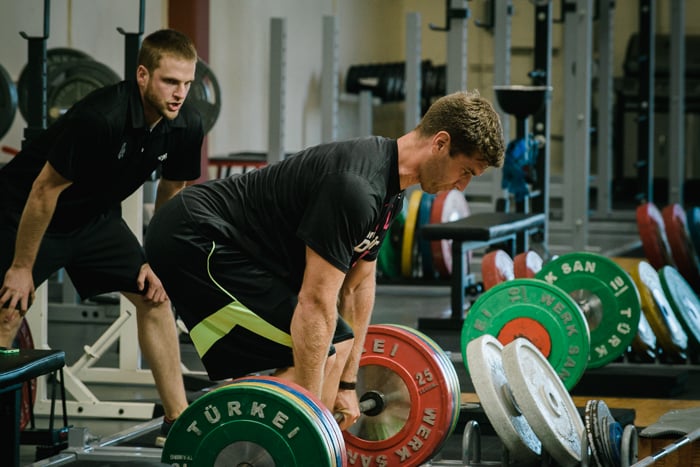
Truth is ever to be found in the simplicity, and not in the multiplicity and confusion of things. – Isaac Newton
Why we can’t measure POWER I was first introduced to this concept from a colleague, Loren Chiu, PhD, while we were both doctoral students at USC. Loren is now a biomechanics professor at the University of Calgary. He explained that the way the term “power” is used to describe an athlete’s quality of movement (short-term, high-intensity muscular performance) is scientifically inaccurate, and that measuring REAL power by performing a vertical jump on a force plate presents a lot of problems.
Unfortunately, power has just become a buzz word because it is easier to explain to coaches and athlete, yet the term is thrown around without an understanding of the true meaning. Power is simply defined as the rate of doing work, and should be limited to this mechanical definition, rather than trying to isolate it during different movement techniques that have a large number of variables.
Why not measure power?
Power is NOT the Main Cause of Movement In a more recent review by Knudson, the author reminds us that when measuring a vertical jump on a force plate, the net vertical impulse determines vertical jump height (with almost a perfect correlation of 1.0). This is an example of Newton’s Second Law of Motion which states that the acceleration of an object is dependent upon two variables – the net force acting upon the object and the mass of the object. As the force acting upon an object is increased, the acceleration of the object is increased. As the mass of an object is increased, the acceleration of the object is decreased. This law is otherwise known as F=ma. Knudson goes on to more poignantly explain that “while the power flow to the ground is a more variable curve that just happens to be correlated with net vertical impulse. In other words, why focus on power when the impulse-momentum relationship (Newton’s Second Law) completely links kinetics to (r = 1.0) movement kinematics?”
Power Ignores the Timing Differences Found in MovementAgain, power is the rate at which work is done. We find this equation often fails, especially when trying to measure athleticism because explosive movements generally lack a steady rate of work. The very short duration of many dynamic events (i.e. running, one-leg jumps, or weightlifting) and the temporal (timing) difference between peak force and peak velocity means that peak and average power measured may not be as meaningful as other biomechanical variables.
Complicated Skill and Technique Much of the athletic research measures mechanical power on an exercise bike, examining the athlete’s STEADY STATE work rate over time (also known as the Wingate test). Aside from measuring steady state work, the other benefit of the exercise bike (and why it accurately measures power) is isolation, essentially removing the upper body from the equation. As we start to measure power during sprinting, weightlifting and jumping (on a force plate), the larger degree of freedom of movement in the athlete’s entire body makes the calculations more volatile and vague. Measuring power from sprinting and weightlifting movements is much more complicated because technique is a crucial component in the successful execution of those skills
What to do instead of power? At Sparta, we use vertical jump on a force plate to evaluate our athletes every day. Validity, is the number one criteria for the variables we collect from this assessment. We’ve repeatedly chosen to leave power out of our assessment and focus more on the three force variables we measure because they are both valid and reliable. We are always striving to simplify our process, freeing up our time to actually interact with our athletes and not get buried under a mountain of data.